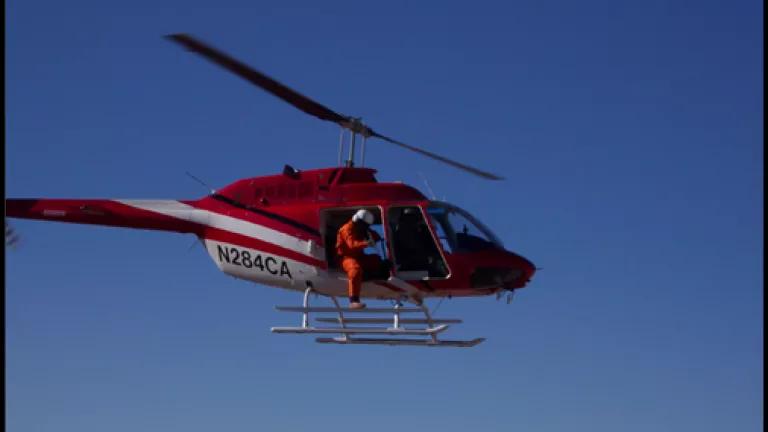
Last month Wildlife Services, a little-known federal agency that we’ve written quite a bit about here at Switchboard, issued a “revised” analysis of its plan to help reduce Idaho's wolf population by roughly 40% -- from around 843 wolves to about 500.
As NRDC’s Matt Skoglund explained in August, when the agency released its original wolf “management” plan:
This high level of killing is predicated upon, among other things, an alleged need to protect livestock, increase elk and deer numbers, protect human safety, and prevent the transmission of disease.
When you dig into the meat of the Draft EA, however, many of the bases for preemptively killing over 300 wolves melt away.
On Monday, NRDC submitted supplemental comments on Wildlife Services revised “management” plan. (You can read NRDC’s original comment here and our supplemental comments here.) Two things really popped out of this revised assessment:
First, it’s now become pretty obvious that Wildlife Services lacks the legal authority to kill wolves in order to boost deer and elk populations. In fact, as we pointed out in our original comments, the regulations that govern the killing of wolves (known as the “10(j)” regulations) provide only that “a State or Tribe” may kill wolves for this reason. In response, Wildlife Services argues that they can kill wolves for the benefit of deer and elk for “scientific purposes,” something that is allowed by the 10(j) rule. Really? Scientific research? This doesn’t even pass the laugh test. It’s a completely new rationale unconnected to anything written about Wildlife Services’ plans to date. Plus, killing 300 wolves throughout the State is hardly a controlled experiment.
Second, to their credit, Wildlife Services acknowledges an “NRDC Alternative” (their label, not ours) that we proposed. That alternative asks the agency to require livestock operators to show “a sustained and ongoing use” of nonlethal methods of predator control before Wildlife Services agrees to assist in the lethal removal of wolves--and that lethal methods would only be used when the nonlethal techniques had failed to keep predation below an acceptable level. In rejecting any detailed analysis of this alternative, Wildlife Services argued that it would be difficult and impractical to determine an “acceptable level” of livestock losses before resorting to lethal removal. The problem with this response is that we didn’t simply make up this idea out of whole cloth. It actually is an alternative that was proposed by….wait for it…Wildlife Services. The “NRDC Alternative” is actually taken, verbatim, from a Wildlife Services’ proposal made by the Washington State office last year. Here’s the full text of the agency’s own alternative they didn’t think merited detailed consideration:
Alternative 3: Nonlethal Before Lethal Methods Alternative requires that: 1) cooperators show evidence of sustained and ongoing use of nonlethal/husbandry techniques aimed at preventing or reducing predation prior to receiving services from WS, 2) WS would use or recommend, as a priority, nonlethal techniques in response to a confirmed damage situation, and 3) lethal techniques would only be used when the use of nonlethal methods failed to keep damages below an acceptable level.
As we noted at the close of our comments: “With over 100,000 people expressing their opinion on this issue, it behooves Wildlife Services to look for a middle-ground approach to its role in wolf management in Idaho. Requiring the use of some nonlethal methods before resorting to lethal removals – not all nonlethal, not all lethal – is such a middle ground and the NRDC Alternative should not have been summarily rejected by the agency.”

